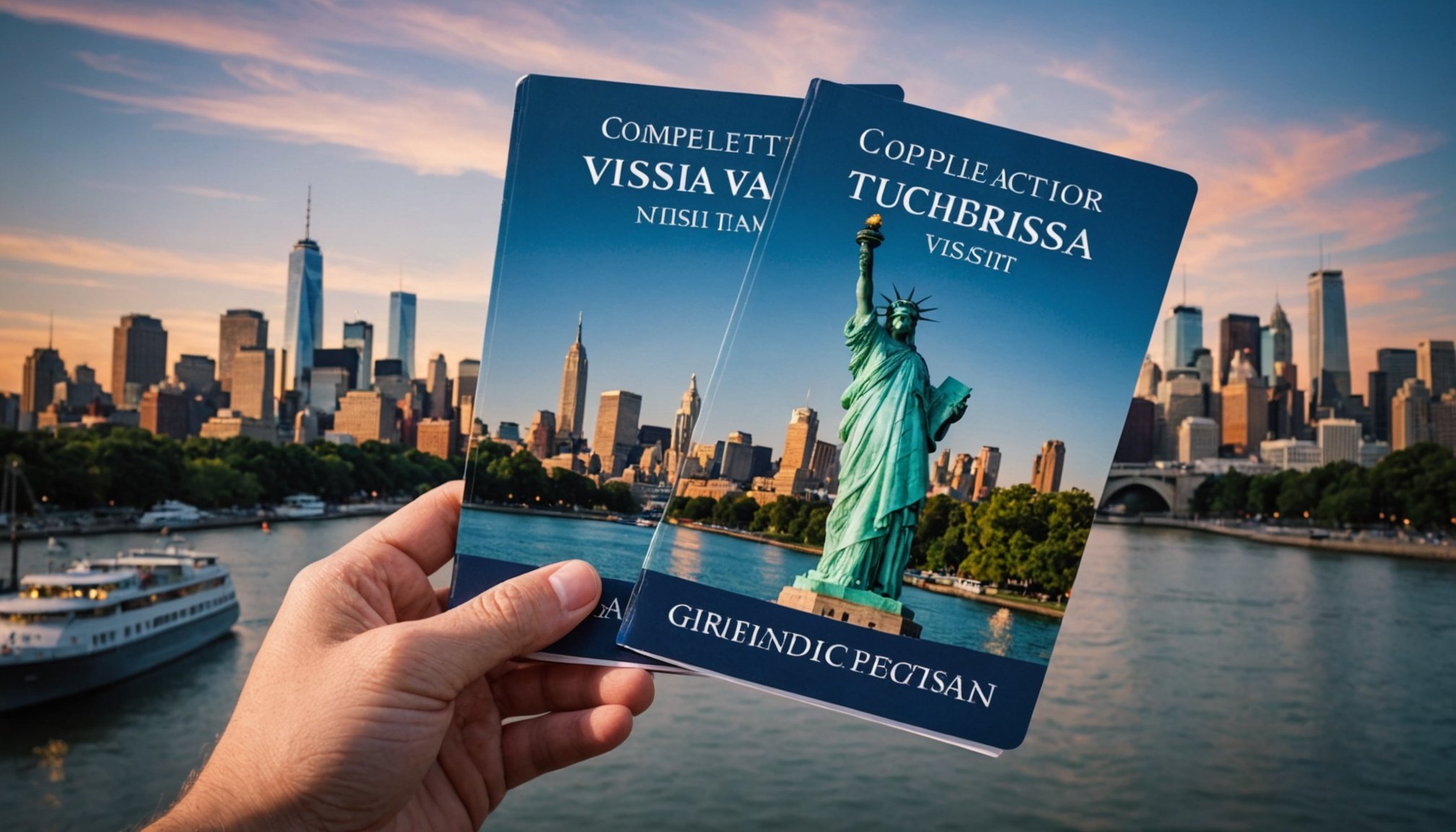Planning a trip to the USA? Securing a tourist visa is often the first step to ensuring that your travel plans go smoothly. The B1/B2 visa allows for both business and tourism purposes, each with distinct requirements. Understanding these nuances can make or break your application. This guide provides everything you need to know—from eligibility criteria to essential documentation—to help you successfully navigate the USA tourist visa process.
Overview of the USA Tourist Visa
The USA tourist visa, classified as a B1/B2 visa, serves distinct purposes for travelers. The B1 visa focuses on business-related activities, such as attending conferences, negotiating contracts, or consulting with associates. In contrast, the B2 visa is designated for tourism and leisure activities, including sightseeing, visiting friends or family, or seeking medical treatment.
Also to see : Which British forests offer the best guided tours on ancient woodland conservation?
Understanding this distinction is crucial when filing your application. Authorities will assess your travel objective to determine whether your activities align with the visa’s guidelines. Clear intent not only strengthens your application but ensures compliance during your stay.
For instance, combining a business conference with leisure sightseeing may still be possible under the B1/B2 visa. However, applicants must clearly outline their plans when applying. Always prepare documentation to support your purpose, such as business invitations or itineraries, to demonstrate transparency.
Also to discover : Top UK Destinations for an Immersive Journey into the History of British Printing
To simplify the process, applicants can explore detailed guidance on preparing for their USA journey here. Remember, precise communication of your travel goals ensures a smoother process and increases the likelihood of approval.
Eligibility Criteria for the USA Tourist Visa
Understanding the eligibility criteria for the USA tourist visa is crucial to a successful application. Key application requirements include proof of lawful intent, sufficient ties to your home country, and meeting basic qualifications regarding age and nationality.
Applicants must demonstrate a genuine purpose to visit the U.S., such as tourism, family visits, or medical treatment. A primary factor is exhibiting strong ties to your home country, such as stable employment, family connections, or property ownership. These factors reassure authorities that you intend to return home after your stay.
Some factors could disqualify an applicant—these include providing incomplete documentation, misrepresentation during your interview, or a history of visa violations. Certain criminal records or past overstays might also impact eligibility.
Additionally, applicants must meet specific financial requirements, proving they can sustain themselves during their stay without relying on U.S. social services. If you’re unsure about any part of the process, detailed instructions for determining your eligibility are available here. Preparing the correct documentation and understanding these guidelines are vital steps toward securing a tourist visa.
Step-by-step Application Process for the USA Tourist Visa
Embarking on your journey to explore the United States starts with understanding how to apply for a USA tourist visa. The process might seem daunting, but breaking it into clear steps makes it manageable.
First, you should complete the DS-160 application form online. This form is the backbone of your visa application and requires detailed personal, travel, and background information. Make sure to review all your inputs before submission, as inaccuracies can cause delays. Once submitted, save the confirmation page because it’s mandatory for your next steps.
Next comes the payment of the visa application fee. Payments are typically made through online banking, cash at designated locations, or other approved methods outlined during the process. After payment, retain the receipt as proof—it’s essential for scheduling your interview.
The final and most critical step is scheduling and preparing for your visa interview at your designated U.S. Embassy or Consulate. During the booking process, you’ll need your DS-160 confirmation number and fee receipt. Preparation here is key: dress appropriately, gather all required documents, and practice answering possible questions confidently. For further succinct guidance, refer to this resource.
Documents Required for the USA Tourist Visa
Before applying, assembling the correct documentation is crucial. Below are the necessary categories to ensure smooth processing.
Personal identification documents
A valid passport is the most critical document, as it not only establishes your identity but also must remain valid for at least six months beyond your intended stay in the USA. Include recent, passport-sized photographs that meet U.S. visa specifications. These photographs should be clear, with a white background, and accurately show your current appearance.
Additionally, any proof of identity, such as national ID cards, may support your application, demonstrating consistent personal information across all documents. Always double-check for accuracy and completion in your paperwork.
Financial documents
To assure financial responsibility, you’ll need bank statements for the last three to six months. These reflect your ability to fund your trip. If supported by someone else, include relevant sponsorship letters along with evidence of their financial standing. You might also need documentation for proof of funds, such as savings or fixed deposits, establishing a stable financial state.
For all financial records, clarity and sufficiency are essential. Provide updated and original documents wherever possible.
Travel-related documents
Prepare a detailed travel itinerary, outlining your complete plan during your stay in the USA. It should include transportation details and hotel bookings to confirm accommodation. Alternatively, if visiting someone, attach invitation letters from your U.S.-based host, explaining their relationship with you and plans for your visit.
Keep documents organized to demonstrate the genuine purpose of travel.
For more information, please visit this guide.
Fee Structure and Associated Costs
When applying for a USA tourist visa, it’s essential to understand the visa processing fees and associated costs to avoid surprises. The standard application fee for a B-2 tourist visa is currently $160. This fee is non-refundable and must be paid whether your application is approved or denied. Additional costs may arise depending on your nationality, such as reciprocity fees, which are determined by agreements between your country and the United States. Not all applicants need to pay these, but it’s advisable to verify if they apply to your situation.
Moreover, some applicants may encounter SEVIS fees, particularly if their travel has educational or cultural exchange components. These fees typically don’t apply to standard tourist visa applicants but are essential to check depending on your travel intentions.
To minimize hidden costs, ensure all required documents meet the standards and avoid last-minute express services, as they often introduce extra charges. Planning well in advance of your intended travel date can save significantly. For a detailed guide to understanding the USA tourist visa cost, visit this page. Understanding the process thoroughly helps you budget effectively and ensures a smoother application journey.
Preparing for the Visa Interview
Getting ready for a tourist visa interview requires preparation and confidence. One major aspect is understanding the questions to expect and knowing how to handle them effectively.
It’s common to be asked about your travel plans, such as your destination, length of stay, and purpose of the visit. For example, if asked, “Why do you want to visit the United States?” A clear, concise response is best: “I plan to explore Florida and visit family for two weeks.” Always provide genuine and consistent information aligning with your documentation.
Equally important is your attire and etiquette. Dressing formally signals respect and professionalism. Arriving on time, maintaining eye contact, and answering politely can create a positive impression. Simple gestures like greeting the officer with a smile can go a long way.
Lastly, prioritize honesty and consistency. If your answers during the interview contradict what’s on your visa application, it may raise suspicions. Double-check your documents beforehand and keep your explanations straightforward. This approach minimizes confusion and builds trust with the interviewer.
For further guidance, visit this resource.
Managing Challenges and Rejections
Navigating the trouble with the USA visa process often comes with its fair share of obstacles, and understanding visa rejection reasons is essential to improving your chances the next time. One of the most common reasons for rejection is insufficient proof of financial stability. This could occur if an applicant cannot demonstrate they have adequate funds to cover their stay in the U.S., creating doubts about their ability to sustain themselves during the visit. Another frequent issue is the lack of strong ties to their home country, such as family, job commitments, or property ownership. These ties are crucial in convincing authorities you intend to return after your trip.
If you face a rejection, don’t panic! First, review the explanation provided by the consular officer and address the specific reasons for denial. This step ensures that your future application shows significant improvement.
When reapplying, consider strengthening your case by presenting updated evidence, such as employment letters or bank statements. Confidence and preparation can make a difference; researching additional solutions and expert guidance, like resources on this link, could guide you toward the next steps.
Frequently Asked Questions About the USA Tourist Visa
Understanding the complexities of a USA tourist visa is essential for smooth travel planning. Below, some common queries and their precise answers are explored.
Questions on visa duration and extensions
How long can visitors stay with a tourist visa? The standard duration for a USA tourist visa (B2) is up to six months per visit. However, the exact length is determined by Customs and Border Protection (CBP) officials at the port of entry.
Can one extend their stay? Yes, it is possible to request an extension. This involves filing Form I-539 with USCIS. Applicants must demonstrate valid reasons, like medical care or unforeseen circumstances, and be prepared to pay the required fees. But remember, staying beyond the authorized timeframe without approval could lead to penalties or denied reentry in the future.
If you would like additional details about applying or extending your stay, you can refer to resources like this helpful guide.
The process, while manageable, requires careful adherence to regulations. Being proactive helps ensure the journey remains stress-free. Always verify the conditions set during arrival to avoid complications.
















